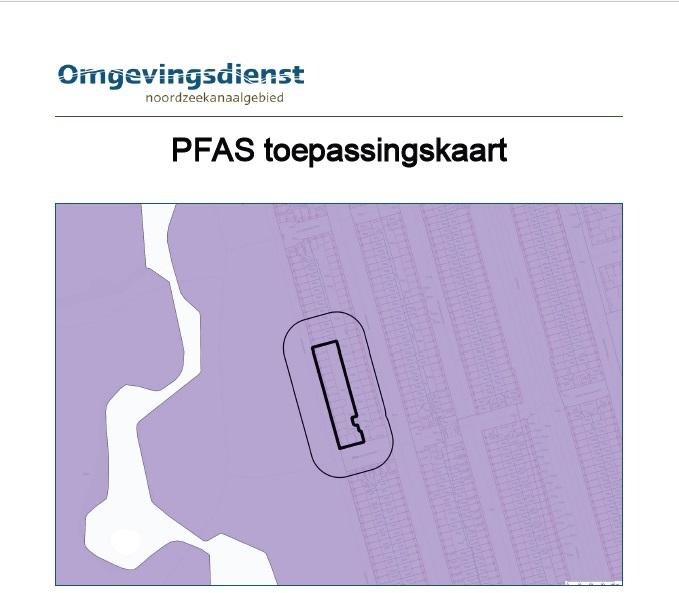Many soil reports include a PFAS application chart. This looks like this. But what should and can you do with it? As a homeowner or homebuyer, you can’t and don’t really have to do much with this. The idea behind this card is as follows. The bottom shows the different PFAS species in the topsoil (BG) and subsoil (OG). Behind them you can then see the present values of those PFAS species where the green colors represent lower values than the purple values.
If you get soil from elsewhere and want to deposit (‘apply’) it on your plot, then the quality of that new soil must at least meet the same values as shown here on this application map. So suppose you want to order a large container of sandy soil to make a mound in your garden. Then you first look at this application map to see what the quality of the soil that is there now is. The PFAS levels in the soil you want to throw into your garden (we call this “applying”) cannot be worse than the PFAS levels of your existing garden soil.
You first need a PFAS analysis of your batch of new soil. And so in order to be allowed to put that down on your plot, that soil must not be more contaminated with PFAS than that soil you’re putting it on. This is called the standstill principle. The quality of an existing soil must not deteriorate.
Need help?
Are you sitting with an issue on a piece of property. For example, do you want to be sure if the soil is clean and have a historical or exploratory soil survey done? Or do you need advice on reading a soil report? Then ask an environmental research firm for a remote opinion or to conduct an exploratory soil survey on site. As a nationwide real estate agency, we have several good environmental maintenance agencies sitting throughout the country that we work with. If you would like to get in touch with one of these consulting companies in your area, please fill out this form and we’ll put you in touch with them (free service from us).

